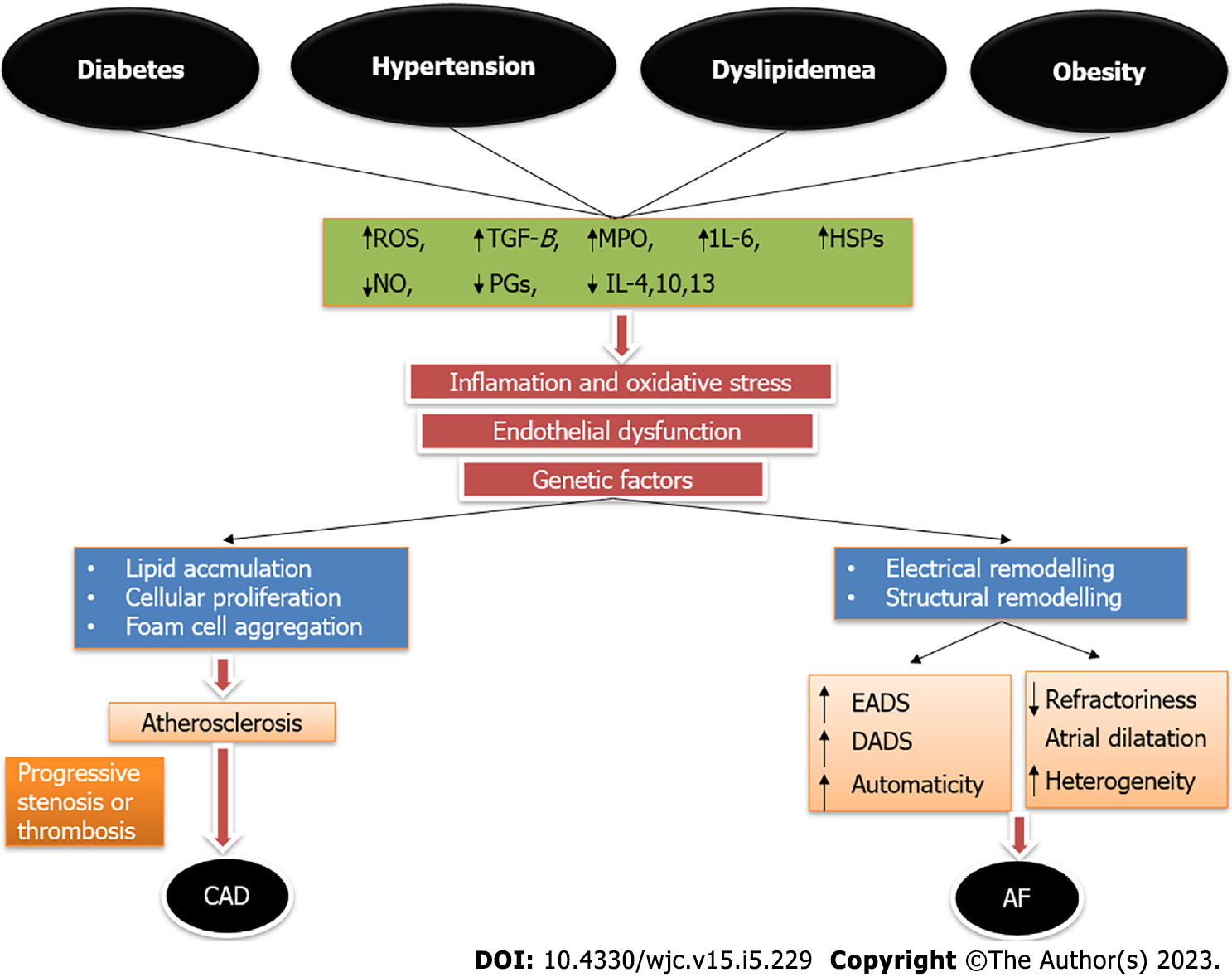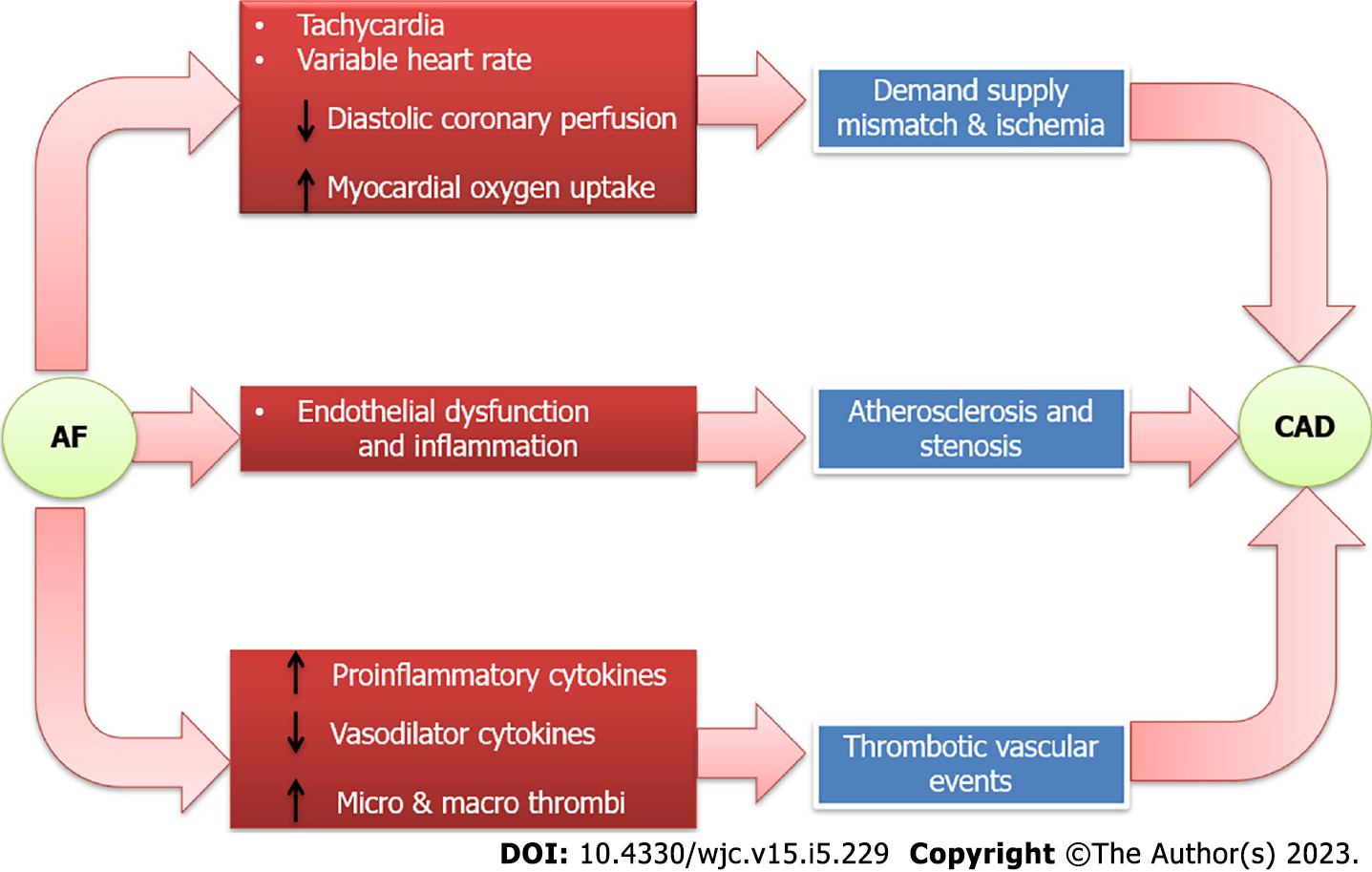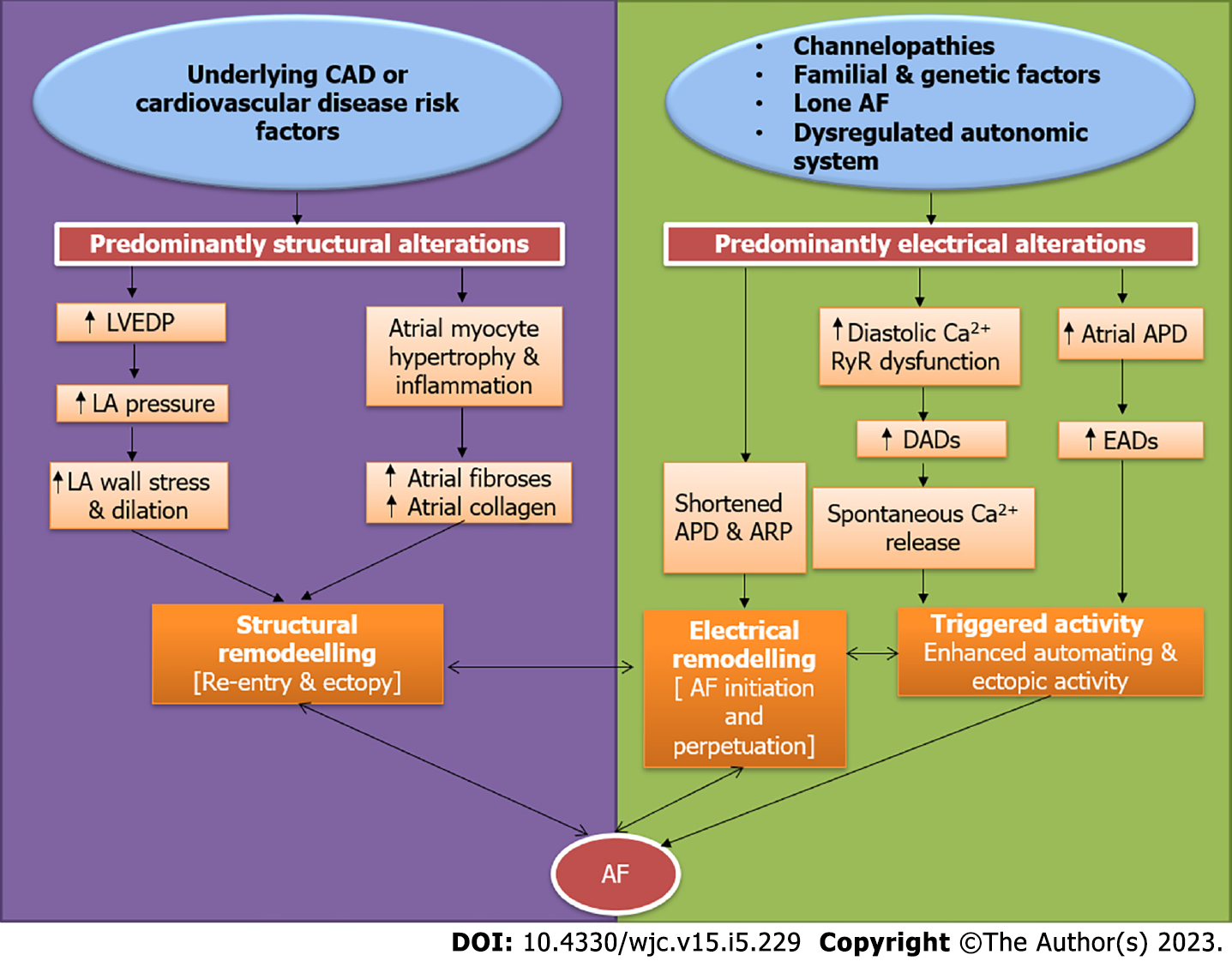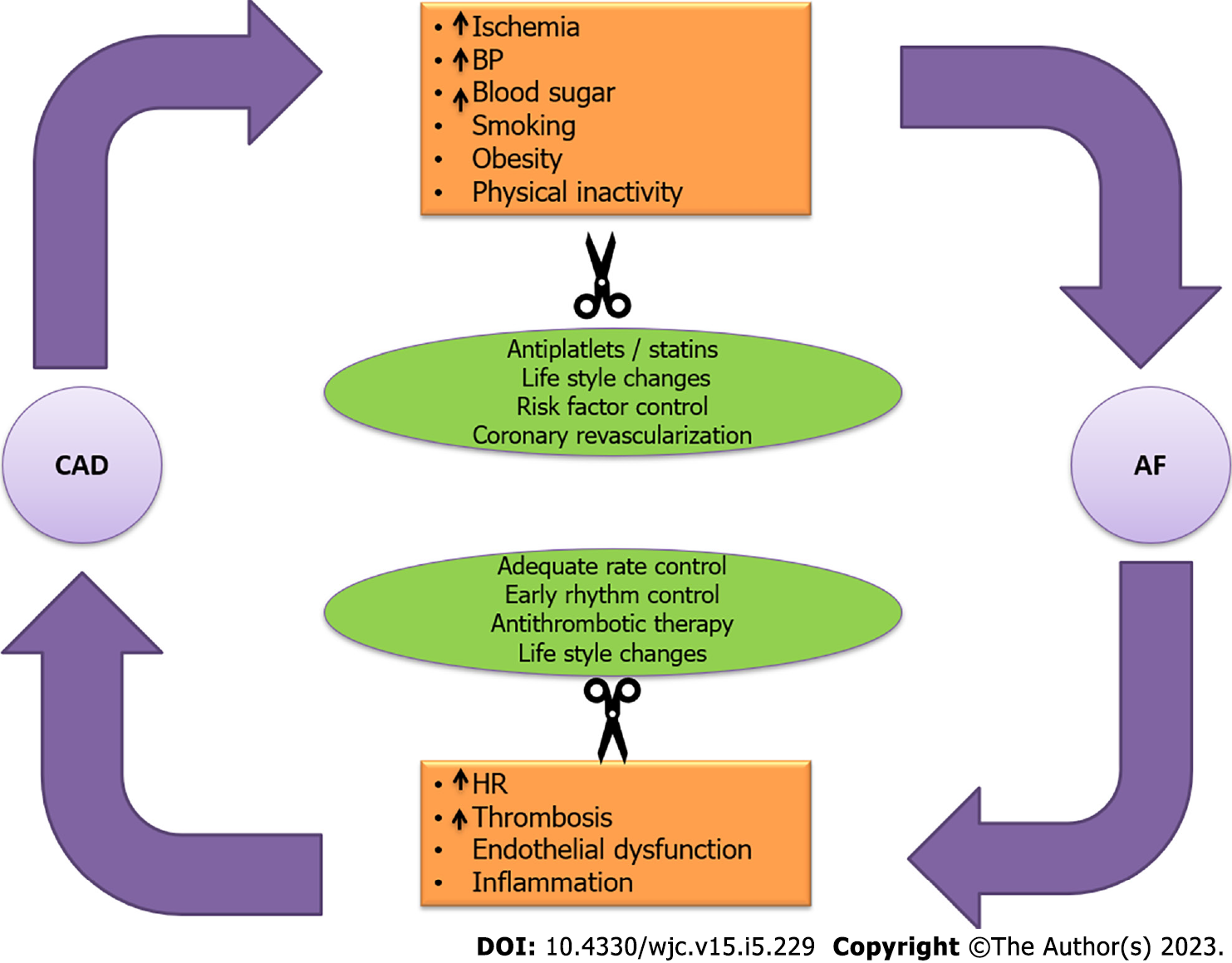Copyright
©The Author(s) 2023.
World J Cardiol. May 26, 2023; 15(5): 229-243
Published online May 26, 2023. doi: 10.4330/wjc.v15.i5.229
Published online May 26, 2023. doi: 10.4330/wjc.v15.i5.229
Figure 1 Interplay of various common risk factors in the pathogenesis of coronary artery disease and atrial fibrillation.
Variable genetic expression manifests as varied clinical phenotype in the form of either or both atrial fibrillation and coronary artery disease in an individual. AF: Atrial fibrillation; CAD: Coronary artery disease; EAD: Early after depolarization; DAD: Delayed after depolarization; HSPs: Heat shock proteins; IL: Interleukin; MPO: Myeloperoxidase; NO: Nitric oxide; PGs: Prostaglandins; ROS: Reactive oxygen species; TGF-β: Transforming growth factor beta.
Figure 2 Pathogenic mechanism that predisposes an individual suffering from coronary artery disease to develop atrial fibrillation.
AF: Atrial fibrillation; CAD: Coronary artery disease; NCX: Na+/Ca2+ exchanger; EAD: Early after depolarization; DAD: Delayed after depolarization.
Figure 3 Pathogenic mechanisms that predispose an individual suffering from atrial fibrillation to develop coronary artery disease.
AF: Atrial fibrillation; CAD: Coronary artery disease; NCX: Na+/Ca2+ exchanger.
Figure 4 Key differences in the pathogenesis of atrial fibrillation in patients with underlying coronary artery disease or risk factors compared to those without underlying cardiovascular risk factors.
AF: Atrial fibrillation; APD: Action potential duration; ARP: Absolute refractory period; CAD: Coronary artery disease; DAD: Delayed after depolarization; EAD: Early after depolarization; LA: Left atrium; LVEDP: Left ventricular end-diastolic pressure; RyR: Ryanodine receptor.
Figure 5 Vicious cycle between coronary artery disease and atrial fibrillation that culminates in a positive feedback as a result of the connections as highlighted in the orange boxes.
Strategies to break this cycle are also depicted in the green ovals. AF: Atrial fibrillation; BP: Blood pressure; CAD: Coronary artery disease; HR: Heart rate.
- Citation: Batta A, Hatwal J, Batta A, Verma S, Sharma YP. Atrial fibrillation and coronary artery disease: An integrative review focusing on therapeutic implications of this relationship. World J Cardiol 2023; 15(5): 229-243
- URL: https://www.wjgnet.com/1949-8462/full/v15/i5/229.htm
- DOI: https://dx.doi.org/10.4330/wjc.v15.i5.229













